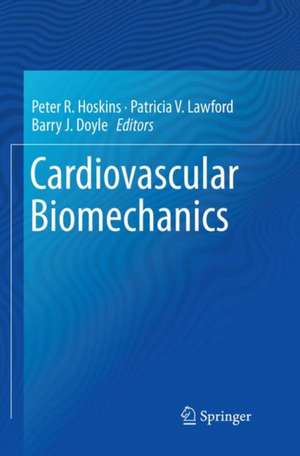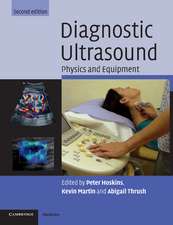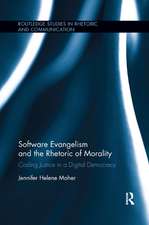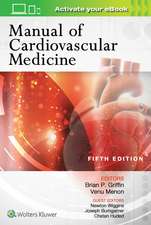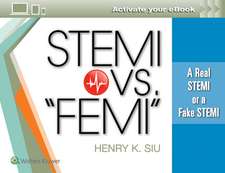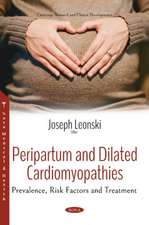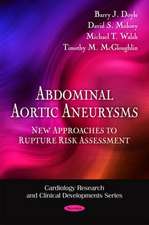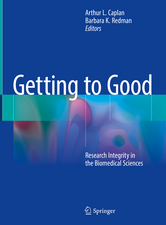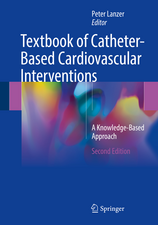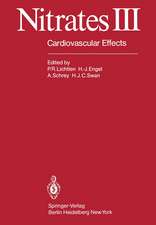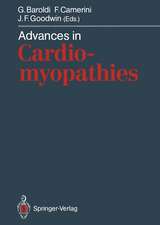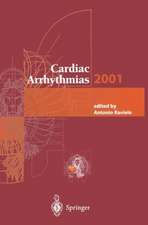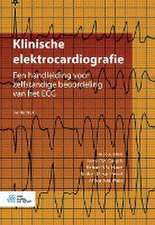Cardiovascular Biomechanics
Editat de Peter R. Hoskins, Patricia V. Lawford, Barry J. Doyleen Limba Engleză Paperback – 18 iul 2018
With a focus on explaining the underlying principles, this book examines the physiology and mechanics of circulation, mechanobiology and the biomechanics of different components of the cardiovascular system, in-vivo techniques, in-vitro techniques, and the medical applications of this research.
Written for undergraduate and postgraduate students and including sample problems at the end of each chapter, this interdisciplinary text provides an essential introduction to the topic. It is also an ideal reference text for researchers and clinical practitioners, and will benefit a wide range of students and researchers including engineers, physicists, biologists and clinicians who are interested in the area of cardiovascular biomechanics.
| Toate formatele și edițiile | Preț | Express |
|---|---|---|
| Paperback (1) | 725.42 lei 6-8 săpt. | |
| Springer International Publishing – 18 iul 2018 | 725.42 lei 6-8 săpt. | |
| Hardback (1) | 1347.93 lei 6-8 săpt. | |
| Springer International Publishing – 23 feb 2017 | 1347.93 lei 6-8 săpt. |
Preț: 725.42 lei
Preț vechi: 763.60 lei
-5% Nou
Puncte Express: 1088
Preț estimativ în valută:
138.85€ • 150.88$ • 116.71£
138.85€ • 150.88$ • 116.71£
Carte tipărită la comandă
Livrare economică 22 aprilie-06 mai
Preluare comenzi: 021 569.72.76
Specificații
ISBN-13: 9783319835136
ISBN-10: 3319835130
Pagini: 462
Ilustrații: IX, 462 p. 220 illus. in color.
Dimensiuni: 155 x 235 x 31 mm
Greutate: 0.66 kg
Ediția:Softcover reprint of the original 1st ed. 2017
Editura: Springer International Publishing
Colecția Springer
Locul publicării:Cham, Switzerland
ISBN-10: 3319835130
Pagini: 462
Ilustrații: IX, 462 p. 220 illus. in color.
Dimensiuni: 155 x 235 x 31 mm
Greutate: 0.66 kg
Ediția:Softcover reprint of the original 1st ed. 2017
Editura: Springer International Publishing
Colecția Springer
Locul publicării:Cham, Switzerland
Cuprins
Introduction to fluid and solid mechanics.- Introduction to biomechanics of the cardiovascular system.- Blood and blood flow.- Arterial biomechanics I. Pressure, flow and stiffness.- Arterial biomechanics II. Forces, adaptability and mechanotransduction.- Excitation-contraction in the heart.- Biomechanics of the venous system.- Biomechanics of the microcirculation.- Medical imaging.- Modelling of the cardiovascular system.- Patient specific modelling.- Flow phantoms.- Measurement of the mechanical properties of biological tissues.- Hypertension.- Atherosclerosis.- Aneurysms.- Cardiovascular prostheses.- Appendix 1: Questions.- Appendix 2: Glossary.- Index.
Notă biografică
Peter Hoskins is professor of medical physics and biomechanics. He trained in Physics and has spent 30 years in developing new methods for diagnosis in arterial disease. This initially involved imaging-only methods including ultrasound and MRI. In the late 1990s, realising the limitations of imaging-only methods he developed a parallel research activity involving the integration of 3D medical imaging (ultrasound, CT, MRI) with computational modelling. Unusually in this area Hoskins comes into biomechanics from an imaging background rather than a modelling background, and from a patient care background rather than a pure fluid/solid mechanics background. Hoskins set up an MSc in biomechanics which has been live since 2011 and the MSc is now in its second year. He has written 41 first author peer-reviewed journal articles and 21 first author chapters. He was lead editor on three books including a major textbook (Diagnostic Ultrasound - Physics and equipment) which is in its secondedition (2009). He has also been principal editor on three journal special issues including two recent; one on ultrasound elastography and the other on patient specific modelling.
Pat Lawford is Professor of Physiological Modelling. She has spent 35 years in cardiovascular biomechanics including experimental techniques and modelling and is centrally involved in recent efforts in the 'Virtual Physiologic Human' project. She is a biologist by training and brings that understanding to her work in biomechanics. This biological background will complement the physics and engineering background of the co-editors. She has extensive teaching experience. This includes 25 years’ experience in MSc teaching to medical physics including 15 years as programme director. She is currently involved in leading postgraduate taught courses within the Faculty of Medicine. She is also a member of a new Institute for in-silico measurement (Insigneo) where she is involved in developing postgraduate taught courses.
Barry Doyle is a Research Fellow of cardiovascular biomechanics. He trained in Bioengineering and has successfully established himself as a figure in the area of patient-specific modelling. To date, he has published the following as first author: 12 journal articles, one full book, two book chapters, and 31 peer-reviewed conference proceedings. He has published numerous other works as co-author. The majority of his publications are within the top 10 percentage of most frequently cited in their area, with one particular publication in the top 20 most cited articles since 2009, and also in the top ten most cited papers on aneurysmal biomechanics. His works has received many awards, most notably, the Mimics Innovation Award in 2009 for his work on cardiovascular biomechanics. Doyle was appointed as Honorary Fellow of The University of Edinburgh in 2010 in recognition of his research efforts.
Barry Doyle is a Research Fellow of cardiovascular biomechanics. He trained in Bioengineering and has successfully established himself as a figure in the area of patient-specific modelling. To date, he has published the following as first author: 12 journal articles, one full book, two book chapters, and 31 peer-reviewed conference proceedings. He has published numerous other works as co-author. The majority of his publications are within the top 10 percentage of most frequently cited in their area, with one particular publication in the top 20 most cited articles since 2009, and also in the top ten most cited papers on aneurysmal biomechanics. His works has received many awards, most notably, the Mimics Innovation Award in 2009 for his work on cardiovascular biomechanics. Doyle was appointed as Honorary Fellow of The University of Edinburgh in 2010 in recognition of his research efforts.
Textul de pe ultima copertă
This book provides a balanced presentation of the fundamental principles of cardiovascular biomechanics research, as well as its valuable clinical applications. Pursuing an integrated approach at the interface of the life sciences, physics and engineering, it also includes extensive images to explain the concepts discussed.
Cardiovascular biomechanics encompasses the relationship between the mechanics of the cardiovascular system and biological function in health and disease, and it is increasingly recognised that normal function and diseases involve a complex interplay between biology and mechanical forces. With a focus on explaining the underlying principles, this book examines the physiology and mechanics of circulation, mechanobiology and the biomechanics of different components of the cardiovascular system, in-vivo techniques, in-vitro techniques, and the medical applications of this research.
Written for undergraduate and postgraduate students and including sample problems at the end of each chapter, this interdisciplinary text provides an essential introduction to the topic. It is also an ideal reference text for researchers and clinical practitioners, and will benefit a wide range of students and researchers including engineers, physicists, biologists and clinicians who are interested in the area of cardiovascular biomechanics.
Cardiovascular biomechanics encompasses the relationship between the mechanics of the cardiovascular system and biological function in health and disease, and it is increasingly recognised that normal function and diseases involve a complex interplay between biology and mechanical forces. With a focus on explaining the underlying principles, this book examines the physiology and mechanics of circulation, mechanobiology and the biomechanics of different components of the cardiovascular system, in-vivo techniques, in-vitro techniques, and the medical applications of this research.
Written for undergraduate and postgraduate students and including sample problems at the end of each chapter, this interdisciplinary text provides an essential introduction to the topic. It is also an ideal reference text for researchers and clinical practitioners, and will benefit a wide range of students and researchers including engineers, physicists, biologists and clinicians who are interested in the area of cardiovascular biomechanics.
Caracteristici
Written in a style accessible to a broad readership, including students, life scientists and clinicians, as well as physical scientists and engineers Includes key concepts exemplified by illustrations using cutting-edge imaging, modelling, and measurement technologies Offers a highly concise and relevant textbook focusing on core areas of cardiovascular mechanics Includes supplementary material: sn.pub/extras
